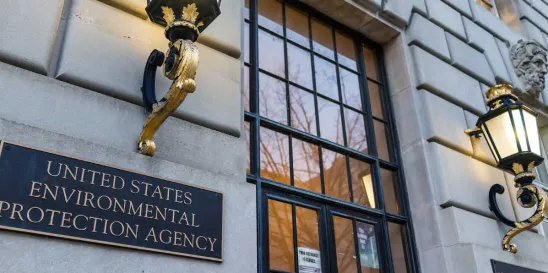In the Byzantine complexity of the Clean Air Act (CAA), EPA’s “once in, always in” policy regarding hazardous air pollutants (HAP) has been particularly confounding. And now it’s back in play, through regulatory revisions proposed by EPA in late September.
EPA’s proposal would prohibit a source from reducing its potential emissions of HAP to below “major source” thresholds (and thus avoiding more stringent regulation) unless the source’s post-reduction emissions of HAP are limited to the level that would have been allowed if the source had remained subject to the “major source” regulation. In other words, a source may not reduce its potential HAP emissions enough to avoid “major source” controls, and then increase its actual emissions to a level higher than such controls would allow. In addition, the proposal would require the post-reduction emissions limit to be federally enforceable – that is,
enforceable by EPA and by citizen groups under the Clean Air Act’s citizen suit provisions. The proposed rule would also apply retroactively, back to January 25, 2018 (more on this date below), thus potentially pulling a previously-reclassified source back into “major source” status unless it obtains such a federally enforceable limit.
Some background: Under the CAA, a “major source” of HAP is defined as having the potential to emit at least (A) ten tons per year of any substance that the CAA or derivative EPA regulations identify as a HAP; (B) twenty-five tons per year of all HAP in total; or (C) any lower threshold that EPA decides is appropriate for a particular HAP. A major source of HAP is subject to emission standards that require Maximum Achievable Control Technology (MACT). By contrast, a non-major source of HAP is subject to standards that EPA to date has typically chosen to make less stringent than MACT (and for some source categories, has not yet adopted).
In effect, EPA’s proposed revisions would partially restore a much-criticized policy – known as “once in, always in” – that EPA announced in 1995 but withdrew in 2018. The policy stated that if a source ever had the potential to emit HAP above the major source threshold after the first substantive compliance date of an applicable MACT standard, the source is “permanently subject” to the standard, even if the source later reduced its potential to emit HAP to below major source levels. In other words: once in, always in. EPA claimed this policy was compelled by the “language and structure” of the CAA, and an underlying Congressional intent to limit or eliminate HAP emissions generally.
On January 25, 2018, EPA withdrew the “once in, always in” policy after concluding from further review that it was not consistent with the CAA’s HAP provisions and exceeded EPA’s CAA authority. Following the withdrawal, EPA promulgated regulations in 2020 (known as the “Major MACT to Area” or “MM2A” rule) to confirm that a source could indeed reclassify itself at any time to non-major HAP status (and for most source categories, thereby avoid MACT) if the source reduced its potential emissions of HAP to below the “major source” levels.
The pending proposed revisions would add conditions to any such re-classification, by requiring a federally enforceable limit to prevent any subsequent emissions of HAP beyond previously-applicable MACT levels. As in the original “once in, always in” policy, the preamble to the proposed revisions claims a basis in Congressional intent to limit or eliminate HAP emissions. Also as in the “once in, always in” policy, however, the preamble does not seem to address how the proposed conditions for MM2A reclassification square with the lack of any such conditions in the CAA’s definition of a “major source” of HAP, or with EPA’s available, but unused, CAA authority to adopt or tighten standards for non-major HAP sources if EPA thinks appropriate.
EPA is taking public comments on the proposed revisions through November 13, 2023.



 />i
/>i

